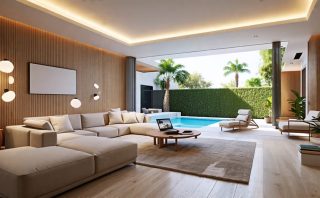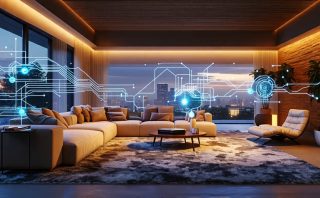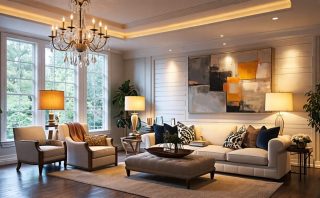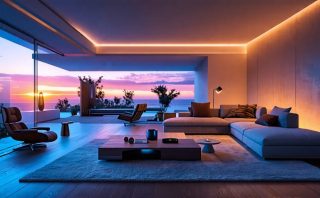Incorporate user feedback directly into your lighting and interior design by engaging in continuous testing and adaptation. Leverage empathy to understand the needs and experiences of end-users, ensuring your designs are truly user-centered. Prioritize functionality and aesthetics by carefully selecting lighting solutions that blend seamless usability with the right ambiance. Foster collaboration with diverse stakeholders to harness different perspectives, enhancing the creativity and effectiveness of your human-centered design approach.
The Principles of Human-Centered Design in Lighting
Empathy: Designing for Human Needs
Empathy is at the heart of human-centered design, particularly in lighting design. It involves putting oneself in the shoes of the user to truly understand their needs and preferences. For homeowners or designers, this means considering how lighting affects mood, productivity, and overall wellbeing. Empathic design requires observing and interacting with users in their spaces to gather insights. For instance, a dimly lit room may obstruct tasks in a home office, while a brightly lit environment can be relaxing in a living area. By identifying these needs, interior designers and architects can propose solutions that enhance the functionality and appeal of a space. Empathy-driven design also means offering personalized consultations, understanding the unique requirements of each project, and comparing a range of products to meet specific user goals. This approach not only improves the quality of lighting solutions but also enriches the user’s experience within the space, ultimately achieving a perfect balance of aesthetics and practicality.

Collaborative Design Processes
In the realm of human-centered design, collaboration is crucial for crafting lighting solutions that are not only effective but also tailored to the unique needs of clients. This multidisciplinary approach involves clients, designers, architects, and engineers working together from the project’s onset to ensure that every perspective is considered. For homeowners and interior designers, this means aligning aesthetic preferences with functionality, creating spaces that are both visually appealing and practical. Architects and commercial business owners benefit from integrating technical requirements with user-friendly designs, fostering environments conducive to productivity and comfort. Engaging clients through personalized consultations allows for deeper insights into their aspirations, enabling the creation of bespoke solutions that truly resonate. By prioritizing collaboration, stakeholders can anticipate potential challenges and adjust plans accordingly, ensuring a smooth implementation process. This cooperative strategy not only enhances creativity but also increases satisfaction by delivering lighting designs that genuinely reflect the users’ desires and needs, culminating in innovative and efficient outcomes.
Human-Centered Lighting in Different Contexts
Residential Spaces
Incorporating human-centered design in residential spaces, particularly through lighting, offers a harmonious blend of comfort and aesthetics tailored to the needs of the inhabitants. By focusing on the residents’ day-to-day activities, designers can craft spaces that enhance well-being and functionality. One such innovative approach is the use of cutting-edge smart lighting, which adapts to natural rhythms and personal preferences, offering personalized ambiance and energy efficiency. Through customized lighting solutions, rooms can transition smoothly from work-friendly environments during the day to relaxed, cozy retreats at night. The versatility of these solutions also considers the aesthetic appeal, adding a layer of elegance with sophisticated fixtures and color temperatures that highlight architectural details and decor. Whether used in living rooms, kitchens, or bedrooms, this thoughtful integration leads to a dynamic and inviting atmosphere, catering to both functional requirements and personal style, making every residence truly feel like home.
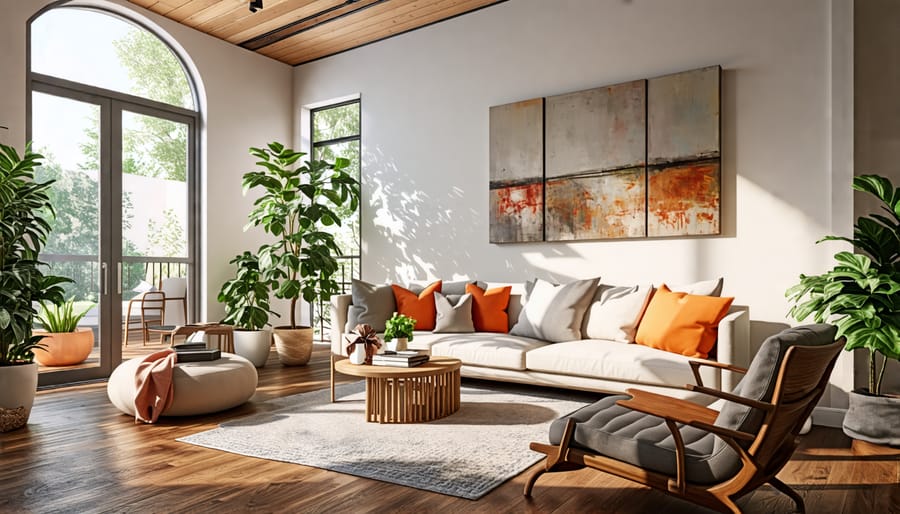
Commercial and Office Environments
Human-centered lighting design in commercial and office environments significantly enhances workplace productivity and employee well-being. By prioritizing human needs and comfort, this approach integrates natural light and adaptive lighting technologies to create environments conducive to focus and collaboration. Natural light exposure boosts mood and energy levels, reducing fatigue and enhancing cognitive function. Adjusting light temperatures and brightness throughout the day aligns with circadian rhythms, promoting alertness in the morning and relaxation as the day winds down. This adaptability contributes to better concentration and overall job satisfaction, which are critical for maximizing productivity. Implementing such lighting solutions requires a tailored approach, considering the specific tasks and dynamics of each workspace. Collaborating with lighting experts ensures that designs are optimized for functionality and aesthetics, creating spaces that support employee health and job performance. By investing in human-centered design, businesses can foster a more dynamic and supportive workplace environment, driving engagement and success.
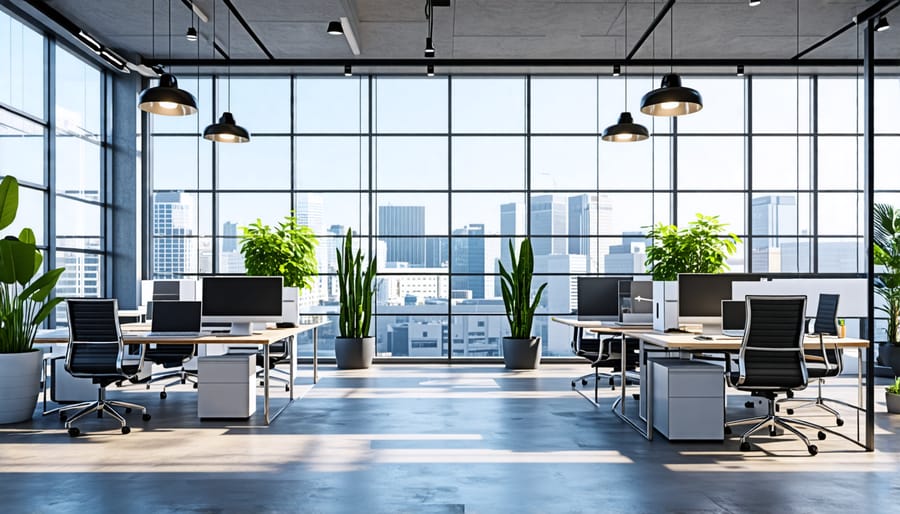
Event and Venue Lighting
Human-centered design principles are pivotal when it comes to enhancing event and venue experiences through lighting. This approach starts with understanding the needs, behaviors, and emotions of the people who will engage with the space, aimed at creating an immersive and memorable atmosphere. By acknowledging how light impacts mood and perception, event planners and designers can tailor lighting solutions to foster desired emotions—be it excitement for a vibrant concert or tranquility for a subdued conference setting.
Incorporating elements such as adjustable lighting and color temperature control allows for real-time adaptations that cater to various needs and preferences. Precision in lighting design ensures that spaces are not only functional but also evoke an appropriate ambiance that suits the event’s purpose. Personalized consultations help select the best products, ranging from sophisticated LED systems to programmable light displays, optimizing both aesthetic appeal and energy efficiency.
Moreover, smart lighting solutions offer flexibility and scalability, accommodating different event sizes and types. By focusing on the user experience from the onset, lighting solutions can support the event narrative, guiding guests through their journey and leaving a lasting impression. In essence, human-centered design in lighting not only fulfills functional requirements but also amplifies the emotional and experiential impact of events, promoting engagement and satisfaction.
Benefits of Human-Centered Design in Lighting
Improved User Satisfaction
Human-centered design significantly boosts user satisfaction by tailoring solutions that align precisely with user needs, especially in the lighting and interior design sectors. By prioritizing user experiences, this approach ensures that products are not only aesthetically pleasing but also functionally exceptional. For homeowners, it means creating living spaces where lighting complements lifestyle and mood. Interior designers and architects benefit from designs that integrate seamlessly with broader aesthetic goals while addressing practical lighting requirements. Event planners achieve ambiance that resonates with event themes, enhancing attendee experiences. For commercial business owners, it translates to environments that improve productivity and customer engagement. This user-focused strategy leads to more satisfied clients who appreciate how well their unique needs and preferences have been understood and addressed, resulting in long-term product loyalty and repeat business.
Enhanced Functionality and Aesthetics
Achieving the perfect interplay between enhanced functionality and aesthetic appeal is a hallmark of human-centered design in lighting solutions. For homeowners and industry experts alike, the goal is to create environments that are not only visually appealing but also highly functional. These solutions integrate user-friendly technology such as adjustable brightness and color temperature, allowing a personalized lighting experience to suit any setting or mood. Moreover, the aesthetic component is never neglected, with designs that range from sleek contemporary fixtures to classic elegance, ensuring that the lighting complements and elevates any space. Personal consultations can help tailor these solutions to specific needs, ensuring harmony between practical functionality and visual appeal, making spaces more inviting and adaptive to changing requirements without compromising on style.
Implementing Human-Centered Design in Your Project
Incorporating human-centered design into your lighting project begins with understanding the needs and desires of the end-users. To achieve this, start by observing daily routines and interactions within the space. Whether you are a homeowner seeking ambiance or a business owner aiming to enhance customer experience, the lighting should align with user activities and preferences. Consider incorporating integrated smart lighting to provide flexibility and adaptability to different environments. This technology can respond to user inputs or automatic settings, making the space more personalized. Strategically placed fixtures can accentuate architectural features and promote well-being by simulating natural light patterns. For instance, task lighting in a kitchen or office should minimize glare and shadows, enhancing productivity. Collaboration with designers and architects ensures that lighting systems naturally complement design elements, maintaining visual harmony. Regular feedback loops with stakeholders also foster iterative improvements, ensuring the design continues to meet evolving user needs. Don’t overlook energy efficiency—opt for LEDs and smart systems that adjust based on occupancy and sunlight levels, offering sustainability while enhancing functionality. By making user experience a guiding principle, your lighting project can achieve both aesthetic appeal and functional excellence, creating spaces where people truly thrive.
Conclusion
By embracing human-centered design in lighting, homeowners and professionals can revolutionize their spaces. Prioritizing user needs ensures functionality and comfort, enhancing both aesthetics and efficiency. This approach enables adaptable, personalized environments, underscoring its potential in contemporary lighting projects. Explore our insights on lighting trends 2023 for innovative ideas.


